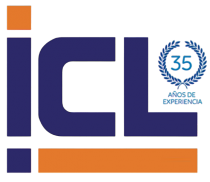The SPEAC System's sEMG Seizure Monitoring Results To Be Featured at the American Clinical Neurophysiology Society (ACNS) Annual Meeting
SAN ANTONIO, Feb. 7, 2020 /PRNewswire-PRWeb/ -- Brain Sentinel announces it is hosting a Product Theater Showcase session for attendees of the American Clinical Neurophysiology Society (ACNS) Annual Meeting in New Orleans. Entitled, "Clinical Utility of sEMG Monitoring", the program will cover 4 topic areas:
1. sEMG signatures of GTC seizures
2. Differentiating between sEMG recorded during GTC seizures and other motor events
3. Identification of patients who may benefit from sEMG monitoring
4. Real-world examples of sEMG monitoring
"The SPEAC System, which is the only FDA-cleared product using the sEMG biomarker for seizure monitoring, has been in clinical practice long enough for us to begin understanding its impact," said Dr. Luke Whitmire, PhD, Chief Science Officer of Brain Sentinel. Whitmire continued, "This session at ACNS will continue the dialogue and discussion that began with the community in December 2019, at an epilepsy conference in Baltimore, MD. The session will show how recorded sEMG signals and quantification of sEMG frequency characteristics uncover patterns that can help physicians characterize events."
ACNS attendees are invited to continue in the discussion. Details of the event are as follows.
-- Saturday, February 8, 2020
-- 12:45 p.m. - 1:45 p.m.
-- Conti Room at the The Roosevelt New Orleans Hotel
Speakers:
1. Selim R. Benbadis MD, FAAN, FACNS
Professor of Neurology and Director
Comprehensive Epilepsy Program, The University of South Florida in Tampa, Florida and Tampa General Hospital
2. Ro Elgavish MD, PhD, FAES
Epileptologist
Brain Sentinel Diagnostic Services Medical Director
"Ideally as epileptologists, what we want is EEG, audio, video, everything. The problem is I can't do video EEG monitoring for 70 days in a row. It doesn't work," said Dr. Selim Benbadis, Director of the Comprehensive Epilepsy Program at the University of South Florida. Benbadis continued, "If the patient continues to report convulsions after prescribing anti-seizure medications, it's important to verify the diagnosis. With the SPEAC System, I can get electrophysiological recordings, frequency decomposition analyses, and possibly audio of the events. I've had some very interesting and unexpected results that I'm excited to share at ACNS."
"We have never had a tool like sEMG that makes it practical to acquire continuous, very long-term, electrophysiological data validated to differentiate seizures*," said Dr. Ro Elgavish, Brain Sentinel Diagnostic Services Medical Director. Elgavish continued, "Using the SPEAC System, over a 30-day, 60-day, or even 90-day monitoring period, physicians have an objective tool to collect data to correlate with subjective, patient-reported events to confirm, establish, or clarify the seizure management plan."
"Physicians use the SPEAC System to quantify and qualify the types of seizure events their patients experience. This type of clarity is important to help provide the best care for patients with seizures," said Chris Fashek, CEO of Brain Sentinel. Fashek continued, "There is a data gap between short-term EEG studies and low-tech patient diaries. The SPEAC System is filling that gap for patients every day."
About Brain Sentinel
Brain Sentinel, Inc. is a privately held company based in San Antonio, Texas, pioneering the use of sEMG technology to help improve the lives of people living with epilepsy. Brain Sentinel manufactures robust diagnostic monitoring platforms for seizures. The SPEAC System is the first-in-class, non-EEG, physiological signal-based seizure monitoring system cleared by the FDA. The data collected by the SPEAC System helps physicians quantify and qualify the types of seizure events that their patients experience. For more information visit https://BrainSentinel.com
-- Footnotes
1. Conradsen I, Wolf P, Sams T, Sorensen HB, Beniczky S. Patterns of muscle activation during generalized tonic and tonic-clonic epileptic seizures. Epilepsia 2011;52:2125-2132.
2. Beniczky S, Conradsen I, Moldovan M, et al. Quantitative analysis of surface electromyography during epileptic and nonepileptic convulsive seizures. Epilepsia 2014;55:1128-1134.
SOURCE Brain Sentinel




